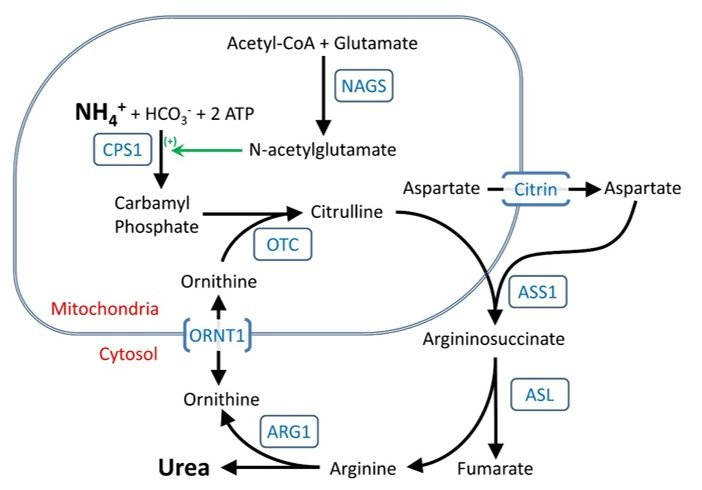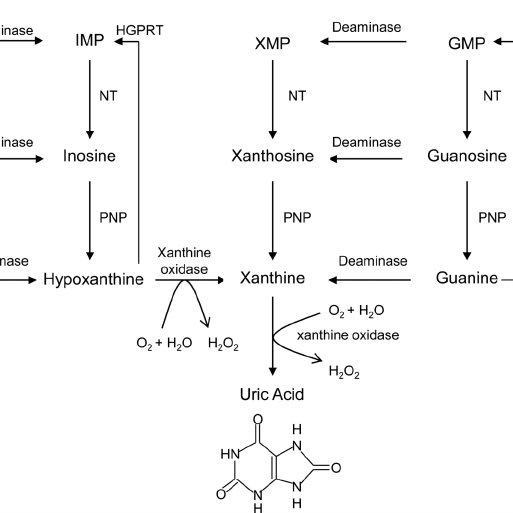More biochimestry series: true to textbooks, everything involved in a biochemical pathway, tends to have a series of reduction (proton donation) or oxidation reactions. Although end products often just seem to be considered waste products because they are excreted
many have roles in and of themselves. Let's take urea. The name sounds weird, it goes up in renal failure, 'blood meals', causes gout. How terrible a molecule. But it's pretty important actually :) it provides HALF plasma anti oxidant capacity.
Essentially there's some jiggery pokery in mitochondria, a transporter across it, some links to Krebs cyle via Acetyl CoA, and urea is produced. The useful thing about urea is that it takes very little water to excrete which is good for land animals. Other creatures like birds
Seabirds (high protein fish diet) get ronud this issue by secreting guano, which you can see bursting into life on the right of the above diagram (comes from guanine). It is iridescent, used in cosmetics - east asia used nightingale faeces for a long time!
And it is guanine (guanophores) that produces iridescence in fish and reptile scales. Uric acid isn't quite as beautiful, but likewise forms those crystals you look for in joint aspirates.Xantine oxidase doesn't just catalyse uric acid production. It catalyses a huge amount
of free radical production e.g. peroxides, nitric species. It is therefore inflammatory. Urea inhibits it :)
There are well described protective effects of urea for shark species in particular - one of the centuries-living greenland shark mutatuions is in its urea pathway. Whether you look at urea in ischaemic environments in neurons, hepatic tissue, or blood vessels, its presence
reduces local oxidation of membranes etc and reduces inflamm cell activity e.g. neutrophils. It works less well inside cells vs plasma, as bicarbonate etc and loads of other redoxy molecules interfere with it. The big players in intracellular oxidative defence
are ascorbic acid and glutathione. Putting them directly into blood though btw, is unhelpful as they're either oxidised there, or still require transport inside cells, and transporters need ATP, which disappears rapidly in sepsissy cells.
If like me you heard about colchicine use during covid as anti inflammatory, you'll also like to know that colchicine seems to wreck microtubule activity and slashes the tyres of macrophages and other immune cells. Its effects are anti inflammatory, not anti uric acid in nature.
For the CBD, URIC ACID causes gout, and is released by tumour lysis syndrome also. UREA is an 'end product' that we can tolerate to certain plasma levels (and may even be acutely very protective!). Once it hits high levels (I hear 30-40 most often), inhibits platelets, causes
pericarditis and encepahlopathy. But tbf, by this point, many other things also messed up as well (potassium I see you). #jomed #biochemistry #twitter

 Read on Twitter
Read on Twitter



